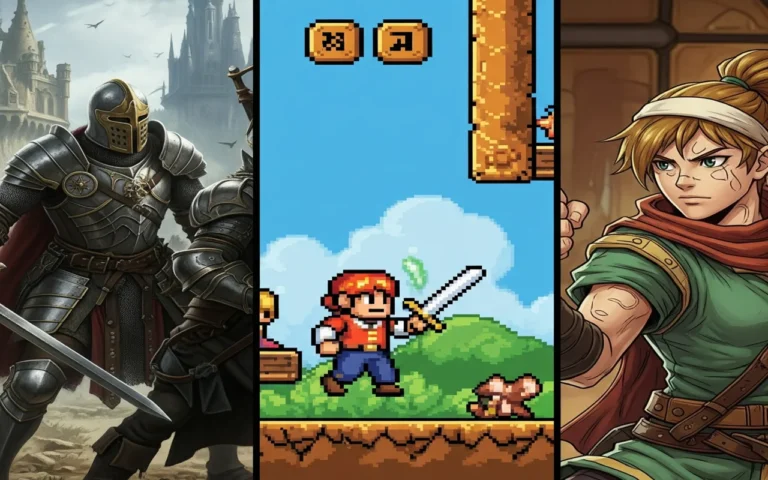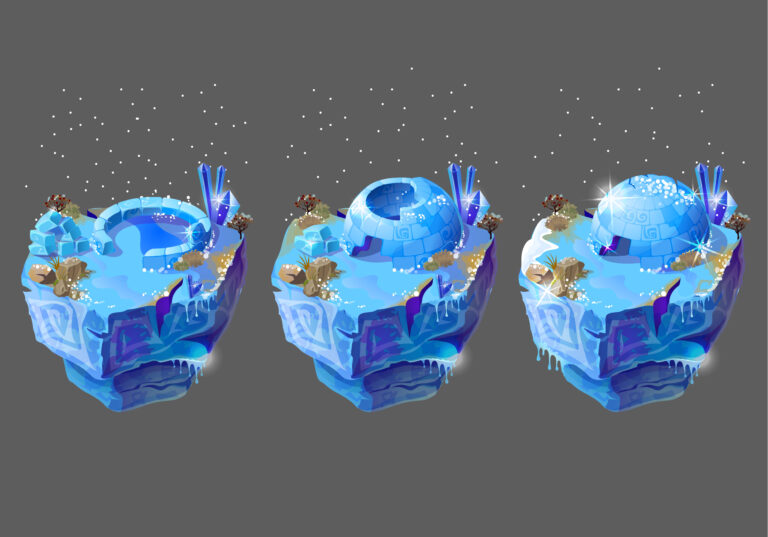The monochrome art style is much more than simply a lack of color. In both interactive media and animation, it represents a calculated artistic choice; one that employs a limited palette to generate feeling, direct attention, and establish a unique identity.
From early pixel-based titles to contemporary cinematic achievements, monochrome visuals continue to inspire every artist and game art studio that values depth and atmosphere over saturated color.
In this guide, we will examine the origins, advantages, notable examples, and challenges of using monochrome art in interactive narratives.


Need Game Art Services?
Visit our Game Art Service page to see how we can help bring your ideas to life!
How Did the Monochrome Art Style Begin?
Monochrome art originated as a technological constraint but matured into a lasting aesthetic. Early video games such as Pong and Game Boy titles relied on single-color screens due to hardware limitations.
However, these visual restrictions compelled designers to focus on color theory, contrast, outline, and movement, fundamental concepts that still define excellent art direction today.
As technology advanced, creators began deliberately using monochrome to convey mood and feeling rather than out of necessity. Games like Limbo and Inside revived this restrained tradition, transforming simplicity into impactful visual narratives.

Why Choose a Monochrome Art Style?
In a visually saturated world, deliberately restricting a work’s color palette to a monochrome or near-monochrome scheme is a powerful artistic choice.
Let’s see how this form of minimalist game art is a commitment to expressing complex ideas and profound emotion through tonal subtlety and graphic clarity alone:
Enhancing Mood and Atmosphere
By eliminating color, monochrome visuals emphasize what truly matters: light, shadow, and tonal value. High levels of contrast can generate fear and tension, while soft grayscale transitions can suggest calm or melancholy.
This kind of palette encourages players to experience emotion purely through lighting and texture. In animated works, monochrome settings often resemble film noir or dreamlike environments, where atmosphere is a stronger guide than pure realism.
Through this deliberate restraint, monochrome becomes a potent emotional language.
Building a Unique Visual Identity
In a market saturated with vibrant 3D environments, a monochrome game instantly achieves distinction. Restricting the use of color necessitates clarity of design; every silhouette, outline, and movement must serve a clear purpose.
Games such as Limbo and Badland became instantly recognizable from just one image because of this emphasis. For independent developers, it is also an economical way to craft memorable, distinctive worlds.
A robust monochrome identity communicates confidence, artistry, and deliberate intent.
Enhancing Storytelling and Emotional Impact
Monochrome simplifies visual messaging, ensuring that nothing detracts from the story’s core emotion. Without color cues, players must rely on light, movement, and audio to interpret meaning.
Titles like Gris and Hollow Knight demonstrate that controlled tonality can express concepts like isolation, healing, or discovery more powerfully than a full spectrum of color might. This reduction distills the game narrative design to its emotional core, turning every subtle shade into a storytelling mechanism.
What Are the Best Examples of Monochrome in Games?
Monochrome aesthetics have defined some of the most memorable visual experiences in contemporary gaming. These notable titles showcase how minimal palettes can yield maximum emotional impact:
Limbo
Playdead’s Limbo (2010) is the quintessential example of monochrome art in gaming. Its black-and-white world of heavy silhouettes and atmospheric fog evokes fear, solitude, and intrigue without requiring any dialogue or user interface.
Every shot feels deeply cinematic, with contrast highlighting danger and silence building suspense. Limbo proved that minimalism can be profoundly expressive and haunting, and its success redefined the language of indie game design.
Badland
Frogmind’s Badland (2013) combines monochrome silhouettes with bright, soft backgrounds to create a vivid and dreamlike environment.
The dark forms of creatures and machinery stand out sharply against luminous skies, allowing players to read motion and depth effortlessly. This intelligent equilibrium of light and shadow improves gameplay clarity while preserving an air of mystery.
Gris
In Gris (2018), color functions as a metaphor for the protagonist’s emotional state. The game begins almost monochrome, steeped in pale grays that reflect despair.
As the character begins to heal, hues gradually return, shifting sadness into a feeling of peace. This progression transforms the limited use of color into a narrative arc, where every tone carries psychological weight.
Inside
Playdead’s Inside (2016) refines the concept introduced in Limbo into a more cinematic experience. Employing desaturated grays, controlled lighting, and subtle touches of red, it constructs an atmosphere of dread and compelling fascination.
Every frame uses tone and shadow to direct the player’s focus and influence their emotion. Despite its lack of explicit exposition or dialogue, Inside conveys a deeply human narrative through silence and visual contrast.
Hollow Knight
Team Cherry’s Hollow Knight (2017) utilizes a muted, nearly monochrome palette of grays, blues, and pale whites to construct its sprawling subterranean world.
The limited color use enhances the overall mood while prioritizing clarity in exploration and combat. Using color theory in game art, sudden bursts, such as radiant light or the orange infection, break the uniformity and signal key emotional beats.
How Does Monochrome Affect Technical Functionality?
From a technical standpoint, adopting a monochrome pipeline simplifies several aspects of production. Reduced color complexity lowers the demands on texture memory, streamlines the shading process, and speeds up rendering time.
Developers gain superior control over visual contrast and silhouette clarity, particularly in mobile and 2D games. For animators, monochrome lighting reduces the number of compositing layers, allowing a greater focus on visual rhythm, timing, and tone.
Nonetheless, expertly managing contrast balance and tonal gradients remains vital; without this, even optimized visuals can appear flat. When implemented skillfully, monochrome offers both artistic purity and performance efficiency.
What Challenges Come with Using Monochromatic Art?
While the monochrome art style offers powerful benefits in atmosphere and identity, relying solely on tonal variations presents unique challenges for designers and animators.
Let’s review some of the common hurdles that come with this art style:
The Limitations of Monochrome Design
The primary difficulty lies in preventing visual monotony. A lack of diverse hues can make environments feel confusing or repetitive if contrast is not properly managed. The gameplay’s readability may also suffer if critical, interactive elements blend too easily into the background.
Furthermore, accessibility is a concern, as some players struggle to differentiate subtle tonal variations. Designers must achieve a balance between artistic focus and functional clarity.
How Can Developers Overcome These Challenges?
Effective solutions include dynamic lighting, particle effects, subtle environmental movement, and strategic use of selective accent colors.
Post-processing tools such as vignette or bloom effects can add depth without compromising the overall monochrome cohesion.
Animators frequently rely on light flicker or texture rhythm to maintain energy in otherwise static scenes. Even minimal visual movements can make a limited palette feel immersive and alive.
How Do You Balance Aesthetics with Gameplay Clarity?
A successful monochrome design must always prioritize readability. The foreground, background, and all interactive elements must remain visually distinct from one another. Utilizing contrast in silhouette, differences in scale, and strategic spacing ensures a smooth gameplay experience.
Inside and Limbo mastered the game design psychology principle, allowing players to navigate the emotional, dense atmospheres effortlessly. When art direction supports gameplay, minimalism becomes mastery.
Final Words
The monochrome art style continues to demonstrate that a minimalist approach can be profoundly expressive. What began as a mere technical limitation has become a deliberate creative declaration, allowing animators and developers to explore symbolism, mood, and deep emotion purely through visual form.
Whether it is used to intensify atmosphere, improve production efficiency, or reinforce a narrative tone, monochrome remains one of the most adaptable tools in digital art.
For any creator seeking timeless impact and emotional clarity, sometimes less is truly more!









